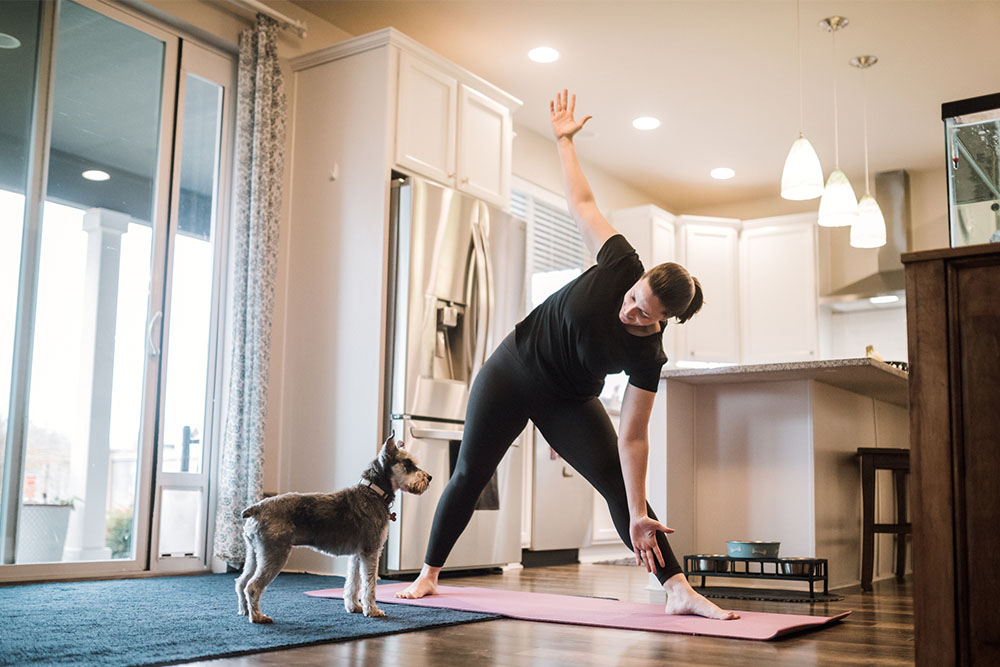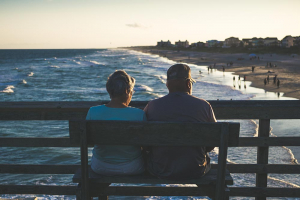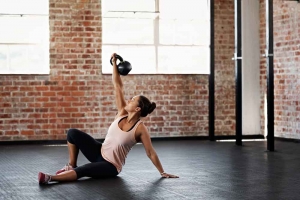How to Get Back Into Exercise After Time Off

With COVID-19 restrictions slowly starting to ease, you are probably itching to get back into exercise – I mean, I know I am.
However, I am here to tell you that you should probably take it little slower than you would like.
In fact, you definitely should.
See, when you start getting into exercise after time off, you want to make sure you start at a point that was easier than when you finished.
And this is because periods of inactivity – like the last couple of months, for instance – can have some rather negative effects on your health and your fitness.
How does inactivity affect health?
Prepare yourself for some rather shocking information here (Novosa 2014; Pišot 2016).
OK so, maybe not that shocking – I mean, you all know that exercise is good for you, so it should make sense that not exercising is not good for you.
Prolonged periods of physical inactivity have been shown to have a myriad of negative effects on health and wellbeing. In fact, those people who are physically inactive are at much higher risk of developing diabetes, heart disease, osteoporosis, depression, and anxiety.
Oh, and they are also at an increased risk of becoming overweight or obese.
Now, interestingly, even short term physical inactivity (say, between 5 and 14 days) has been shown to cause significant declines in cardiovascular function and blood cholesterol levels, combined with an increase in inflammation – all of which indicate a decline in health.
It is important to note that these effects increase with the severity of physical inactivity.
This means that if you are still getting up, walking around, and doing things like gardening and cleaning daily, then this is only going to occur on a very small scale. However, if you have been doing nothing but watching Netflix for the past 2 months, then you could be in some trouble.
How does inactivity affect fitness?
We have spent a bit of time talking about health – but what about fitness?
As you might expect, periods of inactivity can result in a decline fitness across several different of measures. But it may take a little longer then you think (McMaster 2013; Hwang 2017; Mujika 2012).
In general, if quarantine has forced you to completely stop strength training, then it is likely that you would have maintained almost all your strength for about three weeks – after which, it will steadily decline.
Interestingly, you start to lose muscle mass somewhere between 2 and 3 weeks of inactivity, which suggests that we keep neural adaptations a little longer than muscular adaptations.
This is all well and good, but what about aerobic fitness?
Well, for all you cardio animals out there, the news is slightly less good.
Research has shown that your aerobic performance will start to decline after about two weeks of detraining. Even worse, some studies have shown a decline in performance of up to 25% after four weeks off.
Not good.
As with the above, it is highly likely that some of these losses will have been attenuated if you have been doing some exercise at home over the last couple of months.
Even simple bodyweight training will do enough to keep your strength and muscle mass form declining to much. Moreover, if you have been implementing a bit of interval training, there is a good chance your aerobic fitness has barely dropped at all.
Related Article: Is Muscle Memory in Athletes Real?
How to ease into exercise safely and efficiently
Taking all this information into consideration, it makes sense to ease back into exercise after this period of isolation.
For those of you who are getting back into a steady gym routine, this means starting off using about 60-70 % of the weight you were previously. Additionally, I would recommend that try and keep 3-4 repetitions in the tank every single set for that first 1-2 weeks, rather than pushing to failure.
Now, as far as your aerobic activity goes, my recommendations are similar.
For your longer distance stuff, start with a duration that equates to about 60-70% of what you would normally do. Additionally, keep it reasonably light for the first 2-3 weeks. This means you should finish your exercise feeling energized and motivated, not completely exhausted.
With this in mind, I would also try and avoid high intensity interval training for about 2 weeks until your body has adjusted to exercise again. While HIIT is a great way to increase fitness quickly, it places a huge amount of load on the muscular system – and very simply, if you are not prepared for it, your risk of injury increases.
Finally, in my mind, one of the most important things you can do is to make sure that your exercise regime targets the five bio-motor abilities of the human body, being:
-
Strength
-
Endurance
-
Speed
-
Flexibility
-
Balance
This means slowly introducing some higher paced work, such as sprinting, at about the three week mark. This will improve your ability to tolerate high intensity interval training in the future.
Similarly, including some single leg exercises like split squats and single leg deadlifts into your fitness routine is a great way to improve your balance and stability and prevent future injuries.
And lastly, after a period of inactivity, it is highly likely that you will be a little stiff and inflexible. It is for this reason that you want to include some dynamic stretches into your warmup and finish all your training sessions with some static stretching.
This is how you avoid injury –trust me when I say your body will thank you for it.
Finding motivation and setting goals
While you know the importance of exercise, often one of the hardest things about returning to exercise and getting back into shape is finding the motivation do so.
I mean, after your first couple of exercise sessions, you notice that your fitness has dropped, and everything feels harder.
Motivation starts to wane.
Which highlights the importance of setting some good goals.
Good Goals
Before you start exercising, it is time to sit back and reflect on why you want to exercise. What are your reasons for getting back into physical activity, and most importantly, what do you want to achieve?
This could be something like planning to run a marathon, manage 10 full pull ups, or go on a long hike – if it is important to you, the specifics do not matter.
With that in mind, I also think that this is a great opportunity for you to mentally redefine the importance of exercise to you.
I know personally, while I have some specific strength goals I want to achieve by the end of the year (and lose some of my isolation belly fat…), not being able to exercise has made me realize that exercise and training is an important part of my life.
It is who I am, and it is something I want to be associated with.
It sounds strange, but I want people to know that I am an ‘exerciser’.
With that has come the acknowledgment of just how important exercise is for my mental health, and my overall happiness.
As such, on top of my performance goals, I have also set some smaller process orientated goals. These include doing a little bit of exercise every single day, and getting my young daughter around my exercising environment in the hope that this becomes something we can enjoy together when she gets older.
Redefine what exercise means to you and set goals around it.
Related Article: How to Set Health Goals After COVID-19
Top tips for getting back on track
In summary, lets outline some clear steps to getting back on track:
- Redefine what exercise means to you.
- Set some performance and lifestyle goals around exercise.
- Start slowly.
- Stretch before and after you exercise sessions to improve flexibility.
- Include some single leg exercises into your training to improve stability.
- Incorporate some strength work into your weekly routine.
- Include some endurance work into your workout plan.
And that’s it – simple and effective.
Take Home Message
I get it – you want to get back in shape as quickly as you possibly can after all this madness.
But trust me when I say you need to take it slow. Over the last few months, you would have seen some declines in fitness that may increase your risk of injury. And unfortunately, exercise will probably be a little harder.
So set some solid goals and ease back into safely. If you approach it right, you will be better than ever in no time.
References
Nosova, Emily V., et al. “Short-term physical inactivity impairs vascular function.” journal of surgical research 190.2 (2014): 672-682.
Pišot, Rado, et al. “Greater loss in muscle mass and function but smaller metabolic alterations in older compared with younger men following 2 wk of bed rest and recovery.” Journal of Applied Physiology 120.8 (2016): 922-929.
McMaster, Daniel Travis, et al. “The development, retention and decay rates of strength and power in elite rugby union, rugby league and American football.” Sports Medicine 43.5 (2013): 367-384.
Hwang, Paul S., et al. “Resistance training–induced elevations in muscular strength in trained men are maintained after 2 weeks of detraining and not differentially affected by whey protein supplementation.” Journal of strength and conditioning research 31.4 (2017): 869-881.
Mujika, Iñigo. Endurance training: science and practice. Vitoria-Gasteiz: Iñigo Mujika, 2012.
You Might Like:














